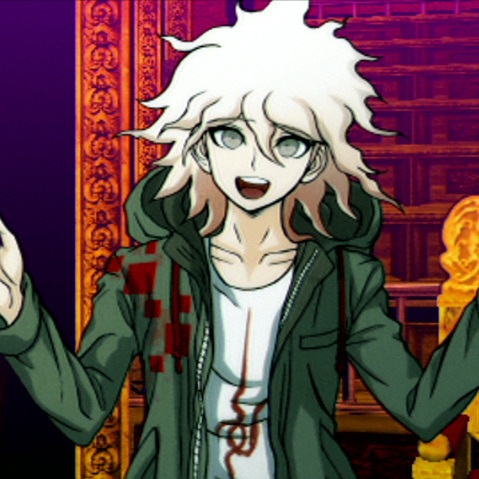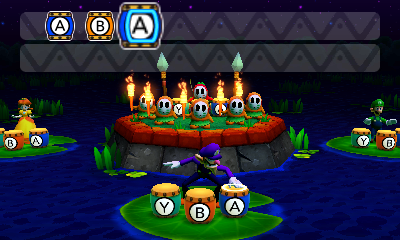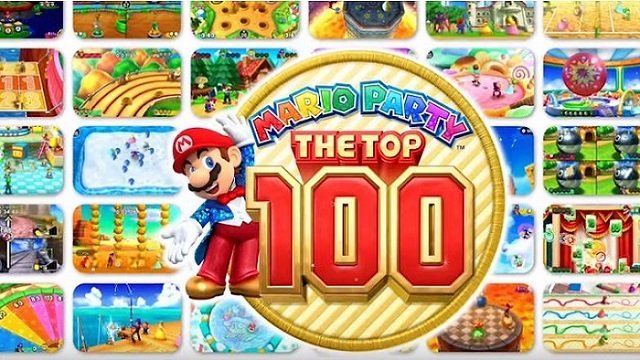Even though I have almost nobody to play with anymore, I
still love the Mario Party games.
They’re games of variety, testing skill and mild strategy with
ever-changing variables due to its many colorful locales in the Mario
universe. I’ve played a lot of them, but
the ones I’ve played the most and actually owned are the original Nintendo 64
trilogy, 6 and DS.
Nintendo seeks to appeal to the longstanding fans of this
almost two-decades long franchise with their new compilation of its 100 best
minigames from the main games: Mario Party: The Top 100.
This is hot off the heels of the previous game, Mario Party: Star Rush. I have Mario Party: Star Rush and I really enjoy it. It has some fun side activities and its main
activities are all creative and faster-paced than the other games without
losing the core elements of what makes Mario Party fun. It did however emphasize the (non-boss) minigames
a bit less than previous entries, with only a little over 50 as opposed to
other games with at least 70. Mario
Party: The Top 100 seems to be trying to invert that. Instead of prioritizing the main game part
and making the minigames around it, they’re now prioritizing the minigames and
building the main game parts around that.
That can be a really good idea or a disastrous one.
Since the minigames are the draw, they put all their effort
into them and succeed with flying colors.
It’s inevitable that someone’s favorites won’t be in the game, but
everyone will definitely have a good number of favorites that are, which you
can mark as such. Every game has some
slight changes to them to enhance them from their original incarnations,
particularly in the graphics.
The N64 minigames no longer have any 2D sprites to make up
for a lack of polygon power and the Gamecube games and beyond all look almost
as good as they originally did. They also
took the liberty of adjusting some of the visuals for the modern day Mario
universe, like replacing instances of the Koopa Kids with Bowser Junior and the
walking piranha plant in Piranha Pursuit with Petey Piranha.
Some of the games have had tweaks made to them to make them
more innovative, like gyroscope controls for a couple of the tilting minigames
of Wii origin and the touch screen for the first game’s Face Lift for more
precise adjusting on a better-looking Bowser face. You might expect gyroscope controls to be
crap for the games they’re in, but they’re responsive and they help add some
spice to the usual movement controls.
There are only a few tweaks to how the games play, like
adding more bounce to bumper balls, adding shapes in addition to colors in
Hexagon Heat and adding more musical notes to snatch in Dizzy Dancing. What
changes are made usually don’t hurt the game and for the most part they’re just
as players will remember them, including the music.
When they put these minigames in they brought the music in
with them and it’s one of my favorite parts of the game. Mario Party has always had fun minigame music
and the developers redid them to put in their big collection. That makes for a killer soundtrack I would
absolutely buy on CD. Fans of the music
will not be disappointed.
They even have the victory jingle for each Mario Party
game. Those are always good for signifying real world altercations.
A handful of games reuse music from other minigames where
they didn’t before, sometimes outside their Mario Party game of origin, but
only a few to do that out of 100 is still impressive. Excluding an extended minigame with two extra
tracks, there are 50 music tracks for the minigames, many of which are only
used for one. That's nothing to scoff at.
The 100 minigames selected are all well-made and come in all
varieties. There are minigames for
skill, action, silly scenarios, memorization and even a few luck-based
minigames. Luck-based games aren't the most liked, but it wouldn't be a Mario Party game without them. After all, luck is a skill all its own.
 |
| I hate this asshole. |
For those wanting longer-lasting minigames, Top 100 also
brought back two-on-two sports minigames, like ice hockey from 5, and puzzle
minigames like Block Star from 6 and Jewel Drop from 10.
I guess you could say The Beat Goes On from 3 is a longer-lasting minigame too, but that seems to be why so many people hate it. I don't though. It escalates in tension and tests memory capacity while having a good beat to help keep focus.
 |
| For added fun say "wa" with every drum hit. |
Top 100 delivers on its promise of 100 fun Mario Party
Minigames. The people who spent hours in
the minigame areas of the other games are bound to get a lot of fun out of
it. Unlike those games though, that’s
where the praise dies down. Top 100
lacks everywhere else, perhaps in part because of its high minigame count.
This is a very barebones entry in the franchise. If this review is shorter than my other
reviews it’s because this game is shorter than my other games. There are only three modes for multiplayer,
most of which are pretty basic.
There’s a competition mode in which you play a group of 3 or
5 minigames for the most wins, a decathalon mode in which you play a pre-set
selection of 5 or 10 score-based games for the higher score and “Minigame
Match.”
Minigame Match is Balloon Bash from Star Rush, where you
move around a free-roaming board to get minigame-triggering balloons, use items
and exchange coins for stars from star balloons. It’s the most like traditional Mario Party.
As many people have pointed out, there is only one board for
this mode. Star Rush had the courtesy to
give Balloon Bash 3 maps and if Top 100 had 3 maps I would have been somewhat
satisfied, but they got lazy. Its only
map isn’t very good either. There’s only
a small cluster of spaces in the middle of it that allows for any freedom of
movement. For the rest you’re railroaded
into two directions, which kills the flexibility Star Rush had. Star Rush’s Ballon Bash maps could get
restrictive, but there were enough open spaces and crossroads to allow for different
approaches. The only strategy Minigame Match adds is more items and special
spaces that give you a coin bonus for passing over them all.
I do like how they handled the minigames in it. Rather than selecting from the game’s entire
minigame pool at random, every player goes in with a pack of 5 minigames,
either chosen favorites or pre-packaged ones based on a theme. When it’s time for a minigame each player
chooses one in their pack and a roulette wheel spins to see which one to play,
with the balloon popper having a bigger chance.
It’s a clever way to narrow down the odds of playing a minigame players
want to play or giving people better at particular minigames a fair shot. A good idea doesn’t change a repetitive game
mode though.
Because of the lack of boards, I didn’t have much fun with
Minigame Match. The other multiplayer
modes are as simple as simple can be, but I had a lot more fun with them
because they play to Top 100’s strengths.
Minigames typically last 30 seconds or less so you can
quickly have a little competition of 5 in less than 10 minutes. It’s straightforward, to the point and
doesn’t waste time, just like the minigames themselves. The triathalon was also surprisingly fun
because having a cumulative score allows for more chances at reaching the top
than four basic standings. Those are the
modes I think players will get the most enjoyment out of; the ones where you
just play minigames, preferably with friends because you’re not getting a substantial
single player experience here.
Mario Party Top 100 focuses on the multiplayer experience
most of all, which leaves the only single player mode very lacking. Top 100 brings back Minigame Island
You’ll breeze through Minigame Island
 |
| He and Diddy aren't playable because of this. |
At one point Toad shows up to challenge you to Slot Car
Derby, a throwback to the first where that was the final minigame of Minigame Island ,
but those moments are brief and don’t change that Minigame Island Minigame Island
Outside of the great soundtrack to listen to, all the
gallery has is still images of Mario Party game boxes, former Mario Party hosts
like M.C. Ballyhoo and the items from Minigame Match, all with a single text
box describing them in a few sentences.
Mario Party DS had a big gallery of characters and
background props from its board you could view in 3D and had fun dialogue to go
with them. In Star Rush there was a big
gallery of animated characters from the minigames you could have do a little
action, see which games they’re in and use an Amiibo where applicable to stamp
their book page. In a game like Jump
Ultimate Stars you could see the first cover of each represented manga with
long pages describing it.
In Mario Party: The Top 100, you get a picture with a little
text box without enough content to fill four pages in total. Pathetic.
I wish I didn’t have to use the word “pathetic”, but from
the smaller character roster, smaller board choices, passive single player and
light extras, Top 100 doesn’t have the polish a fully priced $40 game should
have.
The minigames are the only reason to buy Top 100. Even though I spent $40 on it and the price
isn’t justified, I don’t exactly feel totally ripped off. It succeeds at being a quick and easy pick up
and play game. You could boot it up and
play a 5-minigame competition with computers on your 15 minute break at work
and playing with other 3DS owners is easy thanks to download play. In those categories the game succeeds and may
well be worth the price if you know enough people that’d like to play it. As a substantial game overall, it needed a
lot more and I recommend Star Rush over it.
Wait for a price drop. I give
Mario Party: The Top 100 a 6 out of 10.






No comments:
Post a Comment